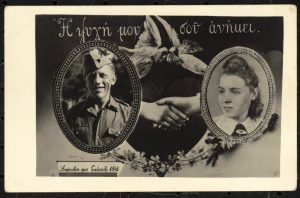Angesichts aktueller politischer Entwicklungen wie dem Angriffskrieg Russlands gegen die Ukraine, od...
„Eine kleine Portion Punk“: Interview zum HSE-Podcast „Tafelrunde“
Bernd Hirsch im Gespräch mit Christoph Bertolo Christoph, seit nunmehr drei Monaten gibt es ...
Quelle: https://hse.hypotheses.org/3409
Neuerscheinungen
Vor kurzem ist Bernhards Schnells Neuedition des ‚Bartholomäus‘ herausgekommen, auf die ich hier unbedingt hinweisen möchte:
Bernhard Schnell (Hg.), ‘Bartholomäus’. Neuedition des Arzneibuchs mit Einleitung, Übersetzung und Glossar (Publikationen aus dem Kolleg ‘Mittelalter und Frühe Neuzeit’ 9), Würzburg 2022.
Klappentext:
Der um 1200 im Südosten des deutschen Sprachraums entstandene ›Bartholomäus‹ gehört zu den ältesten und zugleich wirkmächtigsten Arzneibüchern in deutscher Sprache. Berthold von Regensburg, ein berühmter Prediger, zählte seinen Autor zu den größten Meistern der Arzneikunst. Von der hohen Wertschätzung des Werks zeugt auch eine reiche Überlieferung – Abschriften, Bearbeitungen, Kompilationen, Auszüge und Übersetzungen – aus dem gesamten deutschen Sprachgebiet, eine Überlieferung, die erst im 16. Jahrhundert abbricht.
[...]
Quelle: https://hwgl.hypotheses.org/1790
Escaping the War Horror:
Introduction
Byron Metos is a Greek collector based in Thessaloniki, whose interest focuses on war photography and more specifically on the photography of the two World Wars in Greece. Part of his collection is titled Balkan und Griechenland (Balkans and Greece) and comprises photographs taken mostly by German soldiers and officers, though also including those by itinerant photographers, during the years of the Nazi Occupation in the Balkans, which have originated from photo albums of German soldiers.
During the postwar era, these were acquired by an officer who had served in Greece as a member of the Health Service of the German army. A pensioner in a small town in what was then West Germany, many years after the War, he decided to trace his own route through the war by adding the photographs of his fellow soldiers to his own photographic souvenirs – a process he pursued until the end of his life, spending much time in tracing his former fellow soldiers or their relatives. After his death, the collection passed to his daughter, who, a year later, sold the section relating to Greece, namely almost three thousand (3,000) photographs, to Byron Metos, expressing, however, her wish to retain her family’s anonymity.
The following paper focuses on the part of the Metos Collection that refers to Thessaloniki. Roughly numbering more than 800 prints, this particular part of the collection formed the subject of an exhibition organized in February 2016 at the Museum of Byzantine Culture.
[...]
Quelle: https://visual-history.de/2022/06/07/escaping-the-war-horror/
2. Juni 1622: Die Ermordung des Sultans Osman
dk-blog Politisch unruhig war es nicht nur im Heiligen Römischen Reich. Auch im Osmanischen Reich g...
Postkoloniale Entwürfe einer dichtenden Klio
Christine Gerwin - Auf der Suche nach Alternativen zur „westlichen“ Geschichtsschreibung greifen man...
Quelle: https://gtw.hypotheses.org/6614
Erinnerung an F. C. Delius
Schriftsteller liebt man in der Regel wegen ihrer Bücher. Bei F. C. Delius war es anders. Zunächst ...
Luciano Canfora 80
Quelle: http://adresscomptoir.twoday.net/stories/1022690011/
Textmining: Zwei Programme im Duell
Hallo ihr Lieben! Heute melde ich mich zurück mit einem neuen Beitrag, dieses Mal zum Thema TEX...
La rivière estoit un peu enflée. Nicolas La Hiere und die Saarinspektion von 1609
Wahrscheinlich werden sich einige Saarschiffer zu Beginn des 17. Jh. darüber gewundert haben, dass d...
